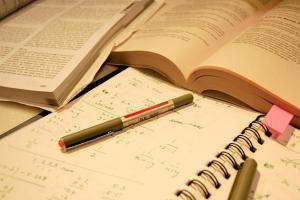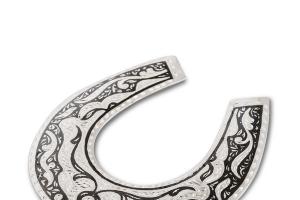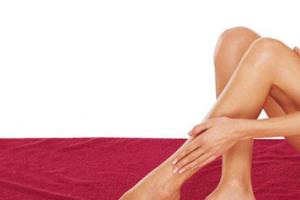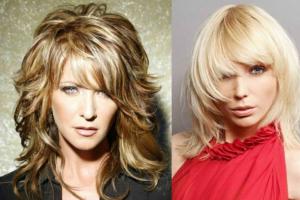If your child is already 5 or 6 years old, then it's time to think about how to effectively prepare him for school. The development of a child's thinking takes place in several stages.
1) The formation of visual-effective thinking: when all the child's thought processes go through action.
2) The formation of visual-figurative thinking: when a child begins to think with the help of images.
3) The formation of verbal-logical thinking: when a child can express his thoughts in words, he begins to independently reason, compare, find simple patterns.
It should be noted that mental development the child is not only in obtaining certain knowledge, but also in the development of perception, memory, thinking, imagination.
In children preschool age the main activity is the game. This means that the knowledge of the new should be carried out using game methods classes.
At preschool age, speech is actively formed and developed in children, vocabulary is replenished, memory is trained. It is very important that the child, when completing the task, tries to reason independently in order to find the right answer.
This article will provide the main logical exercises to help you learn:
- classify objects;
- compare items;
- set the sequence of events;
- train memory;
- draw conclusions.
The duration of classes is 15-20 minutes. Do not overwork the child, so as not to cause him a negative reaction from the classes! On the contrary, try to turn your classes into a game!
Tasks
1) Choose the opposite words according to the meaning:
black - ...
big - ...
funny - ...
good - ...
bitter - ...
wide - ...
high - ...
Kind - ...
cold - ...
smart - ...
fast - ...
2) Listen carefully! Think and answer the questions:
What is more in the forest: birches or trees?
Who is more in the zoo: monkeys or animals?
Who is more in the river: perch or fish?
What is more in the garden: cabbage or vegetables?
What is more in the closet: T-shirts or clothes?
Who is more in the chicken coop: chickens or birds?
3) Finish the sentences:
Example: Monday, Tuesday, Wednesday, Thursday are the days of the week
Milk, bread, kefir, cheese, eggs...
Moscow, Novgorod, St. Petersburg is...
Morning, evening, day, night is...
Katya, Misha, Petya, Ira are...
Dog, cat, mouse...
Chamomile, bellflower, rose - this is ...
A, B, C, D, D is...
4) Listen carefully! Complete the sentences with:
If the train travels faster than the bus, then the bus travels ......... trains.
If sister older brother then brother..........sisters.
If the table is higher than the chair, then the chair is ........ table.
If a cat is larger than a mouse, then a mouse ....... cats.
If the river is wider than the stream, then the stream is ........ rivers.
5) Think of the correct pattern.
Bird - feathers. Fish - ......
Autumn is rain. Winter - ......
Man - hands. Dog - ......
Morning - breakfast. Evening - ......
An apple is a fruit. Tomato - ......
6) What is superfluous?
Armchair, chair, wardrobe, TV.
Rooster, peacock, crow, butterfly.
Suitcase, bag, briefcase, notebook.
Sun, lamp, chandelier, lantern.
7) What are these professions?
Who builds houses?
Who writes poetry?
Who sings songs?
Who heals people?
Who sews clothes?
Who paints pictures?
Who flies into space?
Who is flying the plane?
Who is driving the bus?
Who is driving the train?
Who teaches children at school?
Who trains the animals?
8) Logic tasks.
What lasts: a year or 12 months?
What is heavier: a kilogram of cotton wool or a kilogram of iron?
Petya and Vanya drank different juices - apple and cherry. Petya didn't drink cherry juice. What juice did Vanya drink?
Ira and Lena were dressed in dresses different color: yellow and pink. Lena was not wearing pink. What color was Ira's dress?
Seryozha, Andrey, Slava were picking berries in the garden. Serezha collected more Andrey, and Andrey collected more Glory. Who from the child collected more berries, and who less?
Who will swim to the shore faster - ducklings or chickens?
Who will reach the flower faster - a butterfly or a caterpillar?
Mom has a cat Barsik, a dog Druzhok and a daughter Ulyana. How many children does mom have?
Five eggs are boiled for five minutes. How many minutes does one egg boil?
How many mushrooms can be grown from pine seeds?
What is the best and fastest way to pick a watermelon from a tree?
The boy had one rope. How many times do you have to cut the rope to get three ropes?
There were birds on the tree. They only have 8 wings. How many birds were in the tree?
Two friends played chess for 2 hours. How long did each of them play chess?
Fizkult-hello, dear readers of the Malyshat website! Physical exercises for children 5-6 years old, exercises without objects.
- Children 5-6 years old are already quite good at running, jumping, throwing and catching balls.
Physical exercises for children 5 - 6 years old
- The guys try their hand at sports exercises (skiing, cycling.
In order to develop the speed of movements, physical exercises are carried out for children 5-6 years old. , which can be carried out both with the use of various objects (cubes, skittles, balls), and without them.
Exercises without objects
Physical exercises for children 5-6 years old, exercises without objects
1.I. p .: stand straight, connect the heels together, slightly spread the socks, hands on the belt. Clap your hands in front of you and behind your back. After 10 claps - a break. Then repeat the exercise.
2.I. p.: stand straight, legs apart a little, bend your arms in front of your chest, clench your fingers into fists. Tapping with the left fist on the right - "we hammer in nails." Gradually increase the pace. Then take a short break. After a break, repeat the exercise, but tap the right fist on the left.
3.I. p .: standing, legs slightly apart, arms bent at the elbows. Alternately straighten and bend your arms - “a steam locomotive rides”
4.I. p .: stand straight, legs slightly apart, arms bent at the elbows, fingers clenched into fists. Vigorously sharply straighten, alternately arms forward, slightly turning the body - “boxers”.
5. I. p.: stand straight, connect the heels together, slightly spread the socks, raise one hand up, the other down. Vigorously waving, quickly change the position of the hands. Left up - right - down and vice versa.
6. I. p .: stand straight, spread your legs a little, raise your arms above your head. Tilts to the left and right.
7. I. p .: stand straight, legs apart a little, hands in the castle above your head. Tilt forward without bending your legs and vigorously lower your arms down - "lumberjack".
8. I. p .: lie on your stomach on the mat, legs together, hands under the chin. Alternately bend your knees at the expense of an adult or hit a tambourine.
9. I. p .: the same, arms extended forward. alternately hit the floor with the left and right hand. Do the exercise at the expense of an adult, changing the pace.
10. I. p .: sitting, hands lean behind. At the expense of an adult, hit the heels on the floor. On a signal: "Legs up" raise both legs up and hold a little.
11. I. p .: lie on your back. Sit down, while trying to reach your toes with your hands, leaning forward as deep as possible. Lie down again.
12. I. p.: sitting, bend your legs at the knees, hands in support behind. Stepping over in small steps, turn around, then in one direction, then in the other direction.
13. I. p.: standing. Jumping in place different ways- on one leg, on two legs, from foot to foot, legs apart - legs together. At the same time, hands can be on the belt, to the sides, raised up. Jumping can be accompanied by blows to the tambourine.
14. I. p .: standing, jumping on two legs moving forward. Alternate jumping with walking.
Finish these Physical exercises for children 5-6 years old, exercises without objects, however, like any other, you need walking and breathing exercises.
************************************
Physical exercises for children of the seventh year of life should be dynamic and cover, if possible, a large number of muscle groups. The load should be distributed evenly on all the muscles of the arms, legs and torso, exercises should be performed from various starting positions: standing, sitting and lying down.
During gymnastics, it is important to teach children to breathe correctly, respectively, it is necessary to ensure that when performing exercises, children do not hold their breath, correctly combine inhalation and exhalation with movements.
Gymnastics classes should be carried out at least 2 times a week, during the daytime, in no case should you perform a set of exercises before bedtime.
The room in which gymnastics is carried out must be clean and well ventilated. The vents must be open.
The greatest benefit of general developmental gymnastics is brought to the child if they are carried out in a group with other children.
Duration: 30 minutes.
Introductory part - 3-5 minutes, main part - 20 minutes, final part - 3-5 minutes.
Benefits: racks for high jumps with a rope stretched between them at a height of 30-40 cm.
Gymnastic bench (width 18-20 cm, height 20-25 cm) or curb.
Goals and objectives: improvement of motor skills in walking and running with complicated elements of rebuilding at the signal of an adult; consolidation of motor skills in balance - walking on a narrow plane at a height of 15-20 cm; training in the correct landing in the high jump with a run.
| Introduction | Walking on toes, on heels. Running with a change of direction at the signal of an adult. Running with the transition to walking. |
| Exercise 1 repeat 4-5 times | Starting position (I.P.): legs slightly apart, arms down. On the count of "one, two": raise straight arms up through the sides, stretch, rise on toes, look at the hands - inhale. On the count of "three, four": return to I.P. - exhale. |
| Exercise 2 repeat 5-6 times | I.P .: legs apart, arms lowered, torso to the sides - depicting a "pump". At the expense of "one": tilt to the right. On the count of two: straighten up. On the count of three: lean to the left. On the count of four: straighten up. Don't hold your breath. |
| Exercise 3 repeat 3 times with each leg | I.P .: standing, legs apart to the width of the foot, arms to the sides. On the count of "one": swing the right foot forward, clap in the palm under the foot. On the count of "two": return to I.P. On the count of "three": swing the left foot forward, clap in the palm under the foot. On the count of "four": return to I.P. Breathing is uniform. |
| Exercise 4 repeat 5 times | I.P.: sitting on the floor, legs straight, arms resting behind the body. On the count of "one": raise straight legs. On the count of "two": bend your legs, touch the floor with your feet, tilt your head to your knees - "curl up into a ball." On the count of "three, four": return to I.P. Do not hold your breath. |
| Exercise 5 repeat 4-6 times | I.P .: lying on the stomach, legs extended, arms bent, hands placed under the chin. At the expense of "one, two": bend in the thoracic and lumbar spine, without lifting your legs from the floor, straighten your arms back. On the count of "three, four": return to I.P. Do not hold your breath. |
| Exercise 6 | Run in place for a minute with the transition to walking. |
| Exercise 7 repeat 3-4 times on both sides | Walking on a narrow plane (gymnastics bench, curb, large blocks) The child walks along the bench, keeps balance, arms to the sides, and jumps off. |
| Exercise 8 2-3 minutes | High jumps For high jumps, two children's chairs are placed, and a rope is pulled at a height of 30-40 cm. An adult teaches the child the correct landing. Then the child does. |
| Final part | Walking in circles and in place with breath recovery or low mobility play |
Four-year-olds already seem to be adults, but still very small. At this age, the formation of the personality and character of the child continues, which should be gently corrected by the forces of the parents. What skills have the child already mastered by the age of 4 and what activities are suitable for the development of kids 4-5 years old?
 At 4 years old, a child masters many new skills.
At 4 years old, a child masters many new skills.
Age Features
- The baby is still mobile and energetic, but has already become more assiduous and is able to do one thing for about 20 minutes. Fine motor skills are constantly improving. Most four-year-olds especially enjoy drawing.
- After 4 and a half years, the child changes outwardly, as he begins the active development of muscle and bone tissue.
- For a child older than 4 years, the social component of development is very important. The kid makes friends among other kids, trying to find with them " mutual language". The child is well aware of the feelings of other people, knows how to empathize. The kid has learned to formulate his own thoughts in words. Many 4-year-olds have imaginary friends.
- A 4-year-old child continues to master his native language. For many children of this age, a slight lisp is characteristic. The vocabulary of a four-year-old grows very rapidly (up to 2500-3000 words by the age of 5). The speech of the little one is enriched with expression and intonation. The baby voices his own actions and everything he sees, and also constantly asks a large number of questions. In about 5% of children, the development of speech in the initial stages is accompanied by stuttering.
- The intellectual capabilities of a child of 4-4.5 years old increase significantly. The kid is ready to learn letters and numbers.
 In the form of a game, you can proceed to the study of writing letters and numbers
In the form of a game, you can proceed to the study of writing letters and numbers
Calculate the vaccination calendar
What should a child know?
 At 4 years old, children can make simple applications on their own.
At 4 years old, children can make simple applications on their own.
Height and weight
Compared with the figures at 3 years old, by the age of four, the baby's weight increases by about 2000-2200 grams, and height - by 7-8 centimeters. In order to navigate the pace at which the child’s physical development takes place, doctors and parents compare the baby’s indicators with the norms derived for children of this age category of a certain gender (girls, as a rule, have lower indicators). We presented the average values and the limits of the norm in the following table:
Types of child development
Physical
A child at the age of four should move enough, increase his dexterity, coordination and endurance. This is the purpose physical development baby, including gymnastics, dancing, physical exercises with mom, swimming, cycling, outdoor games and many other activities.
Gymnastics, including dynamic exercises, is important to carry out at least 2 times a week. It is performed during the day, long before bedtime, in a ventilated room and preferably in a group of children. The optimal duration of such gymnastics is 20-25 minutes.
 At 4 years old, you can easily find circles for the physical development of the child
At 4 years old, you can easily find circles for the physical development of the child
Mental
The psyche of a four-year-old develops very actively and the range of emotions of the baby expands. In addition, children at 4-5 years old are very susceptible to the reaction of an adult. If parents or caregivers treat the baby with approval and respect, this helps in forming a positive image of the child about himself.
Classes for the mental development of children 4-4.5 years old include exercises that affect the attention of the baby, as well as memory and thinking. The child is offered:
- Summarize objects according to some attribute.
- Collect a picture consisting of 3-4 parts.
- Identify similarities and differences in drawings and toys.
- Choose from a group of items that are the same.
- Repeat a certain sequence of movements that an adult has shown.
- Assemble buildings from the constructor, focusing on the sample.
- Determine the odd one in the group of items, and then explain your choice.
- Find antonyms for words.
- Remember the plot of the picture.
- Retell the tale.
- Recite rhymes and rhymes by heart.
- Describe a major event that happened recently.
 Retelling the story will show both mental and speech development baby
Retelling the story will show both mental and speech development baby
To train your memory, do the exercises shown in the following video from SovaFilmProduction with your baby.
emotional
Development of emotions 4- summer child is an important part of the full development of the crumbs. A child of this age begins to understand the relationships between people, may notice that a person next to him has changed his mood, knows how to express his own emotions.
A four-year-old knows how to sympathize and show attention. The child feels how they treat him.
Sensory and musical
The sensory development of the child affects the baby's senses, which are responsible for hearing, smell, touch. The child is offered to determine the characteristics of objects by touch. So the baby learns that objects are hard or soft, rough or smooth, warm or cold. Also, activities for sensory development include games related to smells and tastes.
By the age of four, the child is already familiar with some musical instruments, small pieces, music with different rhythms. The child already has favorite melodies, having heard which, the baby will sing along.
 Let's listen to the child's favorite songs more often
Let's listen to the child's favorite songs more often
Speech
Speech development is extremely important for every child of 4 years of age. First of all, it is influenced by the communication of the baby with adults, as well as with other children. This increases the toddler's vocabulary, teaches him to build sentences and express his opinion in words. At the age of 4, many children still do not pronounce hissing and “p”, therefore, with four-year-olds in the form of games, they often conduct classes on the pronunciation of these sounds.
To stimulate the development of speech in children 4-4.5 years old, you can:
- Learn poems and songs with them.
- Look at the pictures with the story and discuss them.
- Look at the story in pictures and reproduce its plot.
- Read stories with mom and discuss them.
- Listen to audio stories.
- Solve riddles.
- Discuss before bed how the day went.
- Do articulation exercises.
- Learn letters and sounds.
- Determine the first letter in a word, divide words into syllables.
Sing the following nursery rhyme from the Lyulyabi TV channel with your child.
If a child at 4 years old has a small vocabulary or formulates complex sentences, it is necessary to assess the dynamics of his speech development. See the video by E. Komarovsky for more details.
fine motor skills
The development of motor skills is considered a very important point in the development plan for babies. younger age. Classes for fine motor skills stimulate speech development by influencing the brain area responsible for speech. Such activities include games with sand, cubes, constructors, beads, cereals, beans. Do it with your baby finger gymnastics, tie knots on the cord, fasten and unfasten zippers, buttons, buttons, hooks. At the age of 4, add crafts to modeling and drawing, for which you need to cut something with scissors and glue it.
For the development of fine motor skills of a child, you can use ordinary cereals. How to conduct such a lesson, see the video of the TSV channel "Mom's School".
cognitive
A four-year-old child actively explores the world, and the development of his cognitive sphere should be aimed at improving memory, thinking, logic, and attention.
Usually classes for cognitive development A 4-year-old child has a certain theme, such as "pets", "spring", "water", "land transportation", "professions", "night" and others. On this topic, games are organized with the child, during which the baby will determine colors, shadows, shapes, differences and similar elements, parts of the whole, generalizing properties, superfluous, opposites, missing elements and much more.



To develop attention
It is important for a child of 4-5 years old to learn to focus on a specific task, as well as to notice small details. He will need these skills in the future for success in school.
 Ask the child to find all the flowers in the picture and circle them.
Ask the child to find all the flowers in the picture and circle them.
To develop the attention of a 4-year-old baby, you can offer your child:
- Repeat actions after mom, for example, sit down - stand up - close your eyes - touch your ear - open your eyes - take your hand to the side.
- Play with the ball in "edible-inedible", "flying-not flying".
- Cross out a certain letter in the typed text. To complicate this task, one letter can be crossed out, and the second - underlined.
- Mom touches the parts of the face and calls them, the child must repeat her actions. Then mom starts to "get it wrong".
 Ask the child to find a pair of identical drawings
Ask the child to find a pair of identical drawings
Mathematical
For a 4 year old child, learning math should be fun and fun game. It is convenient to teach the baby math while walking, for example, counting steps, passing cars, houses, birds. To explain simple examples, you can use fingers or special counting sticks.
 Ordinary walking games with a cube will help the child quickly learn to count
Ordinary walking games with a cube will help the child quickly learn to count
Creative
Lessons aimed at Creative skills baby, most kids like it. These include drawing, creating various crafts and applications, modeling from salt dough or plasticine, as well as role-playing games.
Development diagnostics
Parents should be alerted if at 4 years old a child:
- Cannot walk down stairs in alternating steps.
- He does not give his first and last name, as well as his gender.
- Unable to summarize multiple subjects in one word.
- Unable to memorize a short verse.
- Does not remember the plot of the story.
- Can't count to 5.
- Doesn't know simple geometric shapes.
- Doesn't know primary colors.
- Cannot build a bridge from blocks according to the model.
- Cannot assemble a pyramid of 5 parts.
- Shows cruelty to an animal, toy, or other child.
- Sluggish and lethargic during the day, or, conversely, often agitated.
 Work well on "weak" places in the development of the child
Work well on "weak" places in the development of the child
Games for the development of speech
- The "what happens" game. Ask your child what objects can be long, sharp, round, hard, fragrant, blue, liquid, and so on.
- "What if" game. We discuss the given situations with the child, for example, “what will happen if the ball falls into the water”, “what will happen if I fall into the snow”.
- The "what can be done" game. We ask the baby what can be done with an apple, a ball, water, cookies, sand, and so on. Another option for such a game would be a discussion of “what you can do with” - drink, eat, sew, pour, buy.
- The "what's where" game. We ask the little one what is in the hallway, in the nursery, in the kitchen. Then we ask you to say in which room is the frying pan, wardrobe, TV, and so on.
- Guess who game. We describe the animal in a few words and invite the baby to guess. For example, "guess who is fluffy, red and cunning."
- We stimulate the pronunciation of hissing. We hiss like a snake, drive away the sparrow “shoo-shoo”, pronounce tongue twisters with “sh”, buzz like a fly, repeat tongue twisters with “zh”, alternately buzz and hiss. In order for the child to distinguish “s” from “sh”, we pronounce them in turn. To distinguish "sh" from "h", imagine yourself as a fly, and then a mosquito. To pronounce the sound “h”, we invite the baby to imagine himself as a train.
- We perform gymnastics for the tongue and lips. We smile with a silent pronunciation of “and” (like a frog), stretch our lips forward with a silent “y” (like an elephant), open and close our mouth without sounds (like a fish), opening our mouth, move our tongue up and down (like a swing) and in side to each corner of the mouth (like a clock), keep a relaxed tongue on the lower lip (like a shovel), pull the tongue forward (like a needle).
To set the sound "P", do the exercise "Snake", shown by speech therapist Yulia Orlova.
Articulatory gymnastics will help the child speak the sound more clearly. Complete with crumbs the tasks from the following videos, shown by speech therapist Tatyana Lazareva.
Sample weekly exercise program
Classes for the development of a child of 4 years old should be planned in advance, and best of all - for a week. So you will not miss the types of development that are important for your baby, do not overload the baby and you will be able to prepare all the materials in advance. In drawing up a weekly plan for developmental classes at the age of 4-4.5 years, first of all, it is taken into account whether the baby attends kindergarten. If the baby is in the garden all day, then you need to understand the following points:
- The child in the garden already has daily developmental activities and regular physical activity.
- It will be possible to deal with the baby at home only in the evening and on weekends.
- In the evening, vigorous activity should not be planned.
- After returning from kindergarten, there is not much time left for classes, so, as a rule, only 1-2 classes are planned.
- It is worth finding out what program they are engaged in with the baby in the garden, so as not to duplicate classes, but to supplement them.
For a child who is not yet attending children's institution, the lesson plan will be more extensive. When compiling it, the interests of the crumbs, existing skills, attendance at a development school or sports section are taken into account.
 The development program is only a guide and should be adapted to the needs of the child, his "weak" points and the availability of free time for parents
The development program is only a guide and should be adapted to the needs of the child, his "weak" points and the availability of free time for parents
We offer the following approximate weekly program of developmental activities for a 4-year-old child:
Monday | Tuesday | Wednesday | Thursday | Friday | Saturday | Sunday |
|
Physical development | Charging with music | Outdoor games | ball game | Bike | Fitball game | Charging by video lesson |
|
cognitive development | Learning Colors | Finding an extra item | Studying pets | Looking for differences | We study plants |
||
Sensory and musical development | We study smells | Guessing objects by touch | Sensory bag play | Exploring Tastes | Learning musical instruments |
||
fine motor skills | water play | Finger gymnastics | Bead game | Groats game | Clothespin game | sand play |
|
Speech development | Learning the verse | Listening to an audio story | Fairy tale retelling | Articulation gymnastics | Learning letters | Reading with Mom | Guessing riddles |
creative development | Coloring | Application | Puppet show | Drawing | Crafts from natural materials | Games with a constructor |
How to raise a child from 3 to 6 years old, see the video of the Upbringing channel. TV.
- At the age of 4, a child can be enrolled in some sport sections. visit sports activities not only will it give you the opportunity to spend energy, but it will also help you learn new skills and understand what discipline is.
- Praise your child more often and give him enough attention. The kid has become more mature, but still needs parents.
- From the age of 4, the child can be taken to the cinema, circus and similar places. To get acquainted with this pastime option successfully, do not immediately take tickets to the first row.
- Hearing hundreds of children's questions every day, it is important to remain a patient and wise parent. Do not refuse to answer the baby, even if you do not know what to say. Together look for the answer and satisfy the children's curiosity.
- A kid of 4-5 years old can begin to teach foreign languages. Classes, of course, should be in the form of a game.
 Classes should be fun for both the child and the parents.
Classes should be fun for both the child and the parents.
Care and mode
For the normal development of a four-year-old child, it is important to maintain his health, so parents should pay attention to the daily routine of the little one and caring for the baby:
- The child should be provided with a good rest. 4-year-old children sleep an average of 11-12 hours a day. Many four year olds protest against daytime sleep, but doctors emphasize that children of this age still need rest during the day.
- Every morning in the mode of a 4-year-old child, there are already familiar hygiene procedures. The kid washes himself, brushes his teeth, visits the toilet, combs his hair. Four-year-olds still often have to be reminded to wash their hands after a walk and before eating.
- The child should have daily walks on which four year old enough to move. In addition, you can walk with friends, inventing mobile and exciting games. Articulation gymnastics
- speech therapy classes








